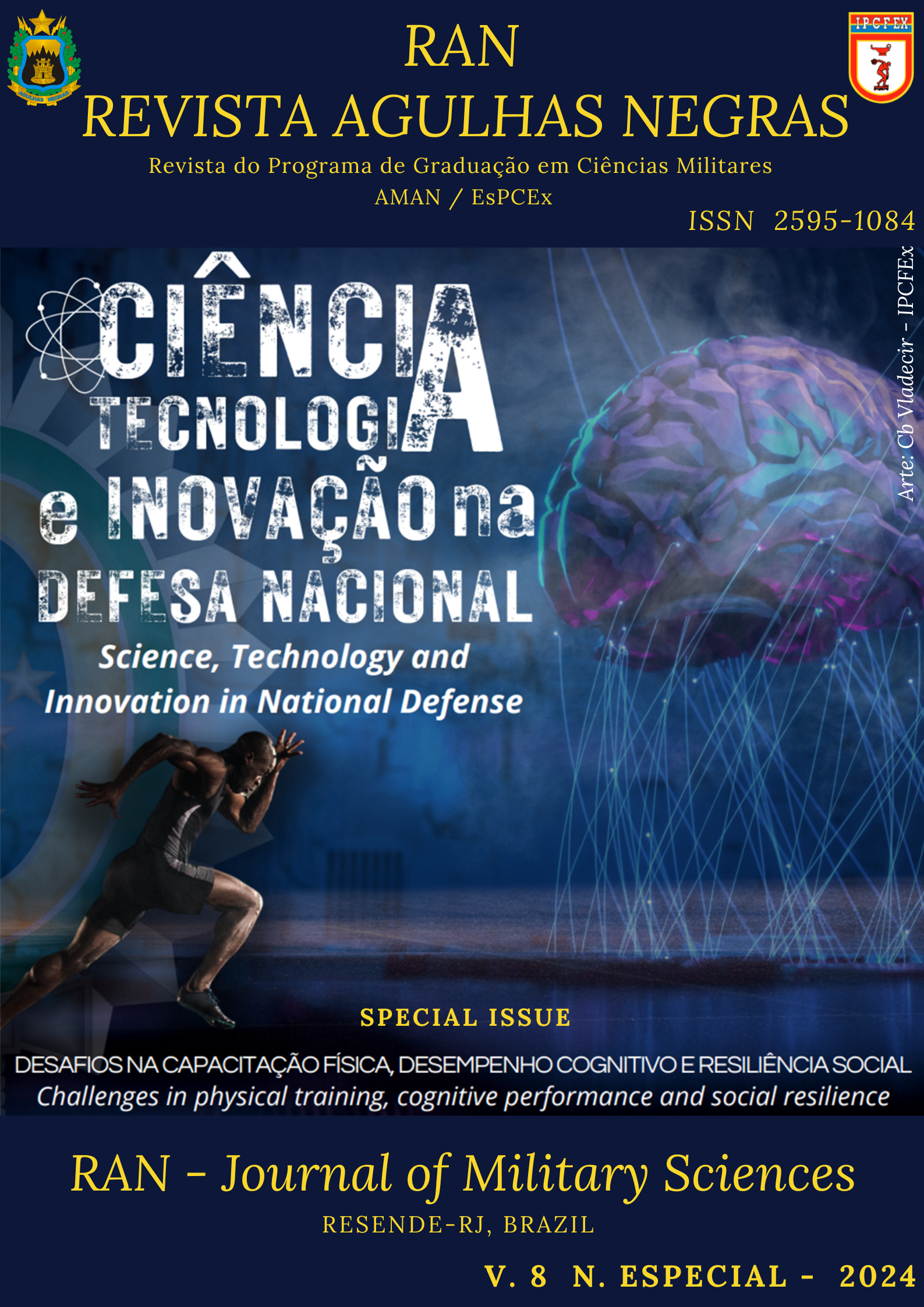Development and Validation of Physical Assessments in the military
insights for tactical athletes
DOI:
https://doi.org/10.70545/ran.v8iEspecial.12861Keywords:
Military personnel, Combat tasks, ValidationAbstract
The Armed Forces constantly fight to keep their troops in a position to act when required, which can be expressed by the concept of combat readiness. In this sense, it is essential to structure good physical training programs and specific assessments, which together can contribute to the adequate preparedness of soldiers to perform their specific tasks. The literature presents scattered information regarding the development and validation of physical tests for tactical athletes, considering that it is a largely subjective process, which is why it is necessary to know the best practices and fundamental requirements of each stage, in order to structure a robust methodology. Therefore, the objective of this work was to systematically present the main insights for the development and validation of physical tests for tactical athletes, in addition to presenting a methodology used in a validation that took place among the Brazilian Air Force between the years of 2021 and 2023. Researchers who intend to develop validations of physical tests for tactical athletes, or even individuals from civilian institutions whose work involves high physical demands, can use this information as support material for their work.
Downloads
References
ALVAR, B.; SELL, K.; DEUSTER, P. Tactical strength and conditioning: an overview. NSCA'S Essentials of Tactical Strength and Conditioning. Champaign, IL: Human Kinetics, p. 1-8, 2017.
BLACKLOCK, R. E. et al. Standard establishment through scenarios (SETS): a new technique for occupational fitness standards. Work, v. 52, n. 2, p. 375-383, 2015. DOI: https://doi.org/10.3233/WOR-152128
BOTTA, Willian Carrero. Modelo de Tarefas Simuladas para avaliação da prontidão para o combate no âmbito da Força Aérea Brasileira. 2023. Tese (Doutorado em Educação Física) – Universidade de Campinas – UNICAMP, Campinas, 2023. Disponível em: https://repositorio.unicamp.br/acervo/detalhe/1371250. Acesso em: 12 dez. 2024.
BOYD, L. et al. Variability in performance on a work simulation test of physical fitness for firefighters. Applied Physiology, Nutrition, and Metabolism, v. 40, n. 4, p. 364-370, 2015. DOI: https://doi.org/10.1139/apnm-2014-0281
CIZEK, G. J.; BUNCH, M. B. Standard setting: A guide to establishing and evaluating performance standards on tests. SAGE Publications Ltd, ed. 1, 2006.
CONSTABLE, S.; PALMER, B. The process of physical fitness standards development. State of the Art Report. Human Systems Information Analysis Center, US Department of Defense, Washington, DC, 2000. DOI: https://doi.org/10.21236/ADA495349
HARRISON, Todd. Rethinking readiness. Strategic Studies Quarterly, v. 8, n. 3, p. 38-68, 2014.
MILLIGAN, G. S. et al. Validity and reliability of physical employment standards. Applied Physiology, Nutrition, and Metabolism, v. 41, n. 6, p. S83-S91, 2016. DOI: https://doi.org/10.1139/apnm-2015-0669
MORAES, C. G. et al. A influência da frequência semanal do treinamento intervalado aeróbico, previsto no manual c20-20, sobre a potência aeróbica de militares. Revista Brasileira de Prescrição e Fisiologia do Exercício, São Paulo, v. 2, n. 8, 2008.
NINDL, B. C. et al. Executive summary from the National strength and conditioning association's second blue ribbon panel on military physical readiness: military physical performance testing. The Journal of Strength & Conditioning Research, v. 29, p. S216-S220, 2015. DOI: https://doi.org/10.1519/JSC.0000000000001037
NINDL, B. C. Strategies for Enhancing Military Physical Readiness in the 21st. 2012.
PAYNE, W.; HARVEY, J. A framework for the design and development of physical employment tests and standards. Ergonomics, v. 53, n. 7, 2010. DOI: https://doi.org/10.1080/00140139.2010.489964
ROBSON, S. et al. Fit for duty? Evaluating the physical fitness requirements of battlefield airmen. Rand health quarterly, v. 7, n. 2, 2018. DOI: https://doi.org/10.7249/RR618
ROUNDS, M. The principal challenge of realizing total force fitness: Changing our readiness culture. Military Medicine, v. 175, n. suppl_8, p. 124-126, 2010. DOI: https://doi.org/10.7205/MILMED-D-10-00134
SPIERING, B. A. et al. Reliability of military-relevant tests designed to assess soldier readiness for occupational and combat-related duties. Military medicine, v. 177, n. 6, p. 663-668, 2012. DOI: https://doi.org/10.7205/MILMED-D-12-00039
STEIN, J. A. Caffeine: Friend or foe in the modern combat environment? 2020. PhD’s Thesis (Doctor of Philosophy), Kansas State University, Manhattan, Kansas, 2020.
TIPTON, M. J.; MILLIGAN, G. S.; REILLY, T. J. Physiological employment standards I. Occupational fitness standards: objectively subjective? European journal of applied physiology, v. 113, p. 2435-2446, 2013. DOI: https://doi.org/10.1007/s00421-012-2569-4
Zumbo, B.D., Rupp, A.A. 2004. Responsible modeling of measurement data for appropriate inferences: important advances in reliability and validity theory. In The SAGE Handbook of Quantitative Methodology for the Social Sciences. Edited by D. Kaplan. Sage Press, Thousand Oaks, Calif., USA. pp. 73–92. DOI: https://doi.org/10.4135/9781412986311.n4









